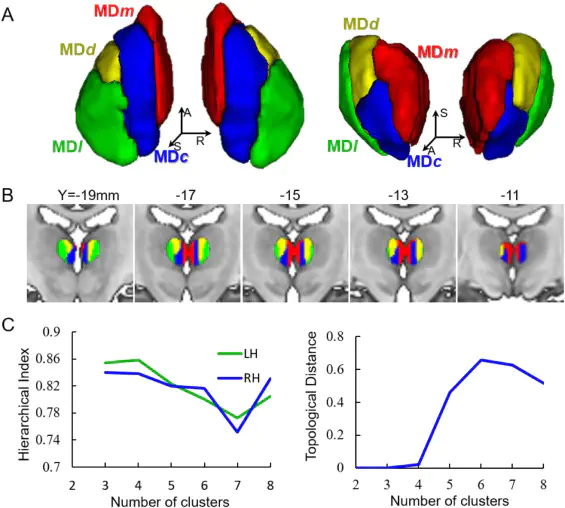 Parcellation of the MD thalamus based on anatomical connectivity profiles
Parcellation of the MD thalamus based on anatomical connectivity profilesAbstract
The human mediodorsal thalamic nucleus (MD) is crucial for higher cognitive functions, while the fine anatomical organization of the MD and the function of each subregion remain elusive. In this study, using high-resolution data provided by the Human Connectome Project, an anatomical connectivity-based method was adopted to unveil the topographic organization of the MD. Four fine-grained subregions were identified in each hemisphere, including the medial (MDm), central (MDc), dorsal (MDd), and lateral (MDl), which recapitulated previous cytoarchitectonic boundaries from histological studies. The subsequent connectivity analysis of the subregions also demonstrated distinct anatomical and functional connectivity patterns, especially with the prefrontal cortex. To further evaluate the function of MD subregions, partial least squares analysis was performed to examine the relationship between different prefrontal-subregion connectivity and behavioral measures in 1012 subjects. The results showed subregion-specific involvement in a range of cognitive functions. Specifically, the MDm predominantly subserved emotional-cognition domains, while the MDl was involved in multiple cognitive functions especially cognitive flexibility and inhibition. The MDc and MDd were correlated with fluid intelligence, processing speed, and emotional cognition. In conclusion, our work provides new insights into the anatomical and functional organization of the MD and highlights the various roles of the prefrontal-thalamic circuitry in human cognition.